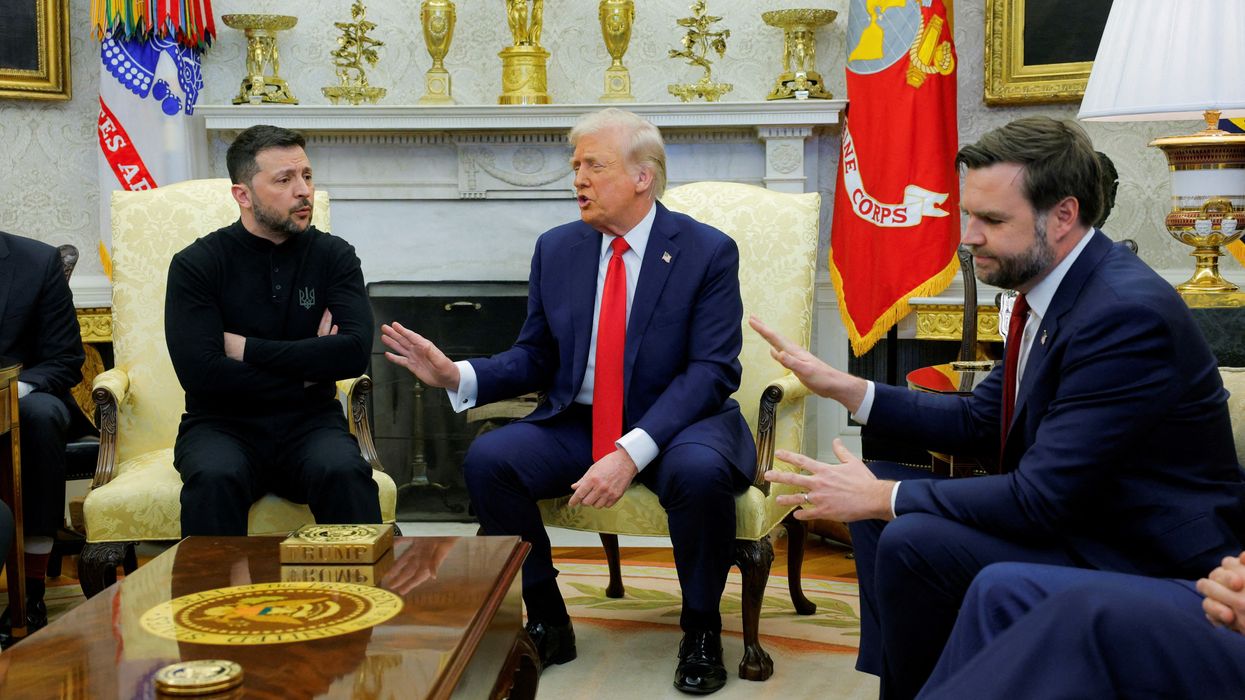The broad consensus among U.S. and Australian policymakers in support of AUKUS masks an ongoing debate in Australia over the wisdom and necessity of the technology-sharing agreement.
There are deep divisions in the Australian Labor Party over the planned acquisition of nuclear-powered submarines from the U.S. The government of Prime Minister Anthony Albanese was able to shut down the dissenters at their party conference earlier this year, but opposition to AUKUS is growing as the full costs become more widely understood.
Polling, meanwhile, consistently finds that public support for AUKUS remains below 50%, and that support seems likely to dwindle as the public takes into account the tradeoffs required for funding such a huge military project.
There are many Australian critics across the political spectrum who question why their government is making such an ambitious and expensive commitment when it doesn’t appear to serve Australian interests. One such critic is Sam Roggeveen of the Lowy Institute, who has written an exceptional new book from a “liberal-conservative” and realist perspective challenging the conventional wisdom about AUKUS and the future of the U.S.-Australian alliance.
In “The Echidna Strategy: Australia’s Search for Power and Peace,” Roggeveen argues that Australia does not need the nuclear-powered submarines or the closer connection with Washington that they represent, and he proposes instead a strategy aimed at discouraging possible future attacks with a focus on maritime denial and strengthening Australia’s relations with Indonesia and the Pacific Island nations.
Like the porcupine strategy for Taiwan to which he compares it, the echidna strategy (based on the spiny anteater-like creature) is designed to defend without provoking, and as such it has no need for military capabilities that give Australia the ability to strike at the Chinese mainland. Accordingly, he sees AUKUS as not merely wasteful, but also potentially quite dangerous by antagonizing China and putting Australia on the path to unnecessary participation in a future war alongside the United States.
The goal of the echidna strategy, then, is to make Australia like the strategy’s adorable namesake: “spiky, but unthreatening.”
Among other things, “The Echidna Strategy” is a welcome antidote to the hawkish groupthink and threat inflation that dominate the conversation about China. Roggeveen doesn’t discount China’s growing military capabilities, but he doesn’t panic about them, either. Commenting on the push for a much larger military budget, he says, “When we examine the threat coldly, it simply does not demand that kind of effort.”
The same could be said of the threat that China poses to U.S. interests, and he does say that: “America’s core security interests are not threatened by China’s rise.” As Roggeveen explains, the U.S. will not maintain its commitments in Asia over the longer term “because that order, while favorable and valuable to America, is not a sufficiently vital interest to justify the immense scale of competition required to maintain it.”
He acknowledges that this runs against conventional wisdom, but he expects that eventually the U.S. will recognize that the costs of its current role in Asia are unnecessary. That is why he considers a long-term bet on the U.S. in an increasingly tight alliance to be an error.
Roggeveen also invokes Eisenhower’s warning about military spending as theft committed at the expense of other public goods: “Even when managed perfectly, defence spending is a huge weight on a budget that could always be better used to improve the wealth and wellbeing of the Australian people.”
The high cost of AUKUS over the coming decades would put a massive weight on the budget, and as Roggeveen shows, it is not necessary for Australian security.
The chief problems that he identifies with AUKUS are that it is unnecessary and makes Australia less secure. “Australia is embarking on its largest ever defence contract so that it can take the fight to China, yet there is no obvious reason to do so, and nobody asked us to do so. In the process, we will make Australia less secure because we give China a reason to take a more aggressive position towards us, and because we tie ourselves to a defence partner that is becoming increasingly unreliable.”
The only good news is that it will take so long for the main pillar of AUKUS to be implemented that “there is time for Australia to change course.” Roggeveen makes a compelling case in the rest of the book that changing course is essential.
One of Australia’s key advantages is distance. Roggeveen urges Australia to exploit this advantage as much as possible, which is why he sees the pursuit of capabilities that enable Australia to go on the offensive against China as being so misguided. “Why compress the distance between us when we can exploit it?”
He proposes that Canberra focus on defensive capabilities to counter threats as they approach Australia rather than acquiring the means to go on the attack. This is both less provocative and much less expensive, and in the end it will make Australia more secure. As he sees it, the Australian government’s current course gets things badly wrong because it “incentivises China to pay more military attention to us.” Restrainers in the U.S. would do well to apply the insights from this book to our own policy arguments.
While he is focused squarely on Australian foreign policy, Roggeveen’s book is a valuable resource for Americans as we debate our government’s approach to China and Asia. Many restrainers will agree with his assessment that the current U.S. military presence in Asia isn’t needed to secure vital U.S. interests. Because of that assessment, he questions the long-term reliability of the U.S. commitment to the alliance, and he assumes that Australia needs to prepare for a future in which the U.S. is not going to be there to defend it.
He acknowledges that the current consensus in Washington seems to be committed to an even more ambitious role in Asia, and he allows that the U.S. might go all-in on rivalry with China, but in that case the echidna strategy will be just as valuable by keeping Australia out of a future U.S.-Chinese clash.
One of Roggeveen’s many excellent points in “The Echidna Strategy” is that the alliance with the United States exists to serve Australian interests and there are circumstances in which it may be appropriate to let the alliance go. As he puts it, “If refusing to participate in a war over Taiwan triggers the nullification of the alliance, then Australia would be better off without the alliance.”
This is a refreshingly clear acknowledgment that Australia has no compelling reason to take part in such a war, and it should force policymakers in both Canberra and Washington to rethink their assumptions about this question. One of the purposes of the alliance with Australia is to help preserve international peace and security in the Pacific. It should not be used to dragoon Australia into a war of choice. If Washington tries to use the alliance in this way, it may end up with one less ally.
Roggeveen admits that the echidna strategy is not “an emotionally satisfying strategy for Australia,” but as he shows throughout the book it is a much smarter and more responsible one. The strategy itself may not be emotionally satisfying, but “The Echidna Strategy” will satisfy its readers.
















